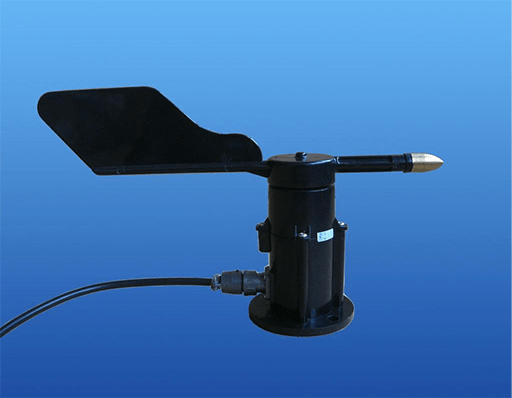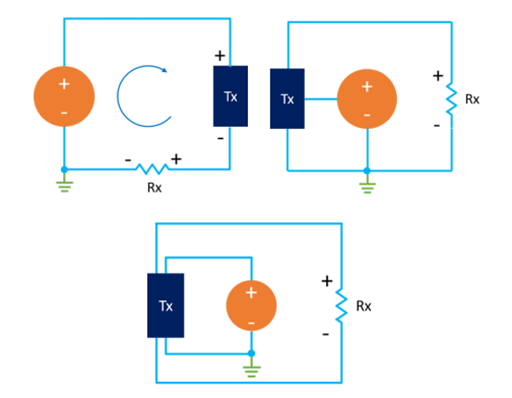
Figure 1: A wireless transmitter.
Transmitters are used in wide applications, such as information transition and remote control by computers. Since transmitters determine devices to work, it is important to get the right one. Both wired and wireless transmitters are hot in recent years. But many of you have no idea about what to choose, and this article will take you to look at the two types’ differences.
In addition, it’s also critical whether the wired or wireless sensors could meet the requirements of users. Both wired and wireless transmitters have advantages and disadvantages. Knowing these pros and cons, you could be clear about which type of transmitter is better for your own use.
Wired Transmitters
Wired transmitters are divided into three types, including two-wire, three-wire, and four-wire systems. For more information, you could check Principles and Differences of 2-wire, 3-wire, and 4-wire Transmitters.

Figure 2: 2-wire, 3-wire, 4-wire transmitter wiring diagram.
Wired transmitters are more common in our use, and in many cases, they are one of the most reliable systems because they are directly connected to the receiving device. This also means wired transmitters could serve long and users would need to replace them after a long time of use.
However, wired transmitters require a lot of space and are more difficult to maintain. With the increase of the design and use of them, this problem is more obvious.
Wireless Transmitters
Wireless transmitters as an alternative are becoming increasingly ordinary in sensor applications. This is mainly because they cost less to install and are convenient to maintain. What’s more, wireless sensor networks offer greater flexibility, which makes the sensor system adapt to the user's needs.
Despite these benefits, there are disadvantages to wireless transmitters. For example, they are often limited by distance because the speed of data transmission depends on the distance between the receiving device and the transmitter. In contrast, it’s predictable that the data transmission time of wired transmitters would spend.
So what’s the difference between a wireless transmitter and a wired transmitter? From the perspective of the function and purpose of the product, wired and wireless transmitters are used to monitor the working scene, extract physical or chemical data to achieve monitoring. In this sense, wireless transmitters are an extension of the traditional wired transmitters.

Figure 3: Rosemount wireless transmitter.
Pros of Wireless Transmitters
In fact, as an extension, wireless transmitters are better than wired transmitters in some aspects. So let us see what are the pros of wireless transmitters.
Higher flexibility
They are suitable for wireless mobile monitoring, such as cranes, mobile bottling equipment, transports, automatic vehicle system, and monorail conveyor, etc.
Higher security
With the development of technology and the emergence of new threats, the ability to upgrade security maintenance is essential. New encryption policies and covert data transferring suggest that the security of wireless devices will surpass that of wired devices.
In addition, in some dangerous environments, such as blasting occasions that are not suitable for wiring, wireless transmitters can ensure the safety of personnel.
Higher reliability
Wireless systems can avoid damage caused by motion, such as wire bending due to long-chain and cable twisting and breaking due to rotary motion. In addition, there would not be faults caused by connectors in the wired network.
Lower personnel workload
The places where we could not build cables arbitrarily are due to the topography of bridges, mountains, and rivers. In these places, wireless transmitters could reduce the cost of labor and time.
When faults occur, the maintenance points of wireless transmitters are more concentrated, which can avoid the cumbersome affairs of inspections along the line.
Low cost
For installation, maintenance, troubleshooting, and wiring upgrades, wireless transmitters offer significant advantages in cost over wired transmitters.
As more offices, buildings, and equipment adapt to the modern world, the choice between a wireless and wired device has become increasingly important. While wireless transmitters seem to be better, wired transmitters are also valuable in use. When it comes to choosing the right transmitter, it is not important whether it’s wired or wireless. A suitable transmitter is much necessary.
Related Info
Principles and Differences of 2-wire, 3-wire, and 4-wire Transmitters9 Different Types of Transmitters
Different Types of Pressure Transmitters, Working Principle, and How to Select Pressure Transmitter
Differences Between Smart Pressure Transmitter and Analog Pressure Transmitter


